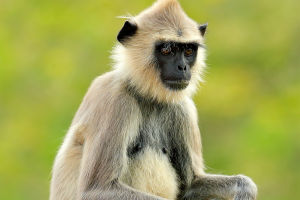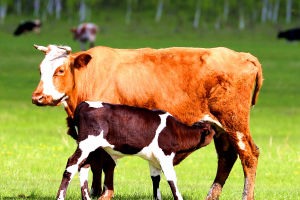Camels are domestic animals that have hoofs founds in Asia and Africa. They often live in desert or semi-desert regions. Nomads keep camels for their milk. The camels also help in transport from one place to another in search of pasture for the pastoralist communities.
In severe heat a camel survives four to seven days without drinking, but it can go 10 months without drinking at all if it is not working and the forage contains enough moisture.
Even salty water can be tolerated, and between drinks it forages far from oases to find food unavailable to other livestock. The body rehydrates within minutes of a long drink, absorbing over 100 litres in 5–10 minutes.
Cattle could not tolerate such a sudden dilution of the blood, because their red blood cells would burst under the osmotic stress.
Swirling desert sand can be a problem for most of us, but camels have special adaptations for the pesky stuff. A thin nictitating membrane on each eye, like a clear inner eyelid, protects the eyes from sandstorms while still letting in enough light for camels to see.
Double rows of extra-long eyelashes also help keep sand out of the eyes. And camels can close their nostrils to keep sand out of their nose, too! Their large, broad feet are heavily callused; they expand when stepped on and contract when lifted to simplify walking in sand or snow.
Camels are diurnal and spend their days eating. They are very clever at finding food in their harsh desert environment. Each half of the split upper lip moves independently, so camels can get near the ground for eating short grass. These tough but flexible lips can break off and eat vegetation such as thorns or salty plants; they even eat fish.
Camels are ruminants, like cows, and they regurgitate the food back up from their stomach to chew it again. When they do that, smelly gasses come up as well, making for some pretty potent breath!
Camel milk is one of the healthiest milks in the world.Slightly low in total fat and saturated fat compared to cow milk. It also possesses sufficient amounts of iron and vitamin C.
Nutritionists state that camel milk has the ability to improve a person’s immune system, stimulates blood circulation, prevents diabetes, and improves the health of the heart.
They store fat in a body part called the hump.Camels possess either one or two humps that are located on their backs. These humps exist for purposes of storing fats that the camels utilize for nourishment during the famine.
Lack of food for a long time triggers the camel’s body to metabolize the fat into a form that can be used for nutrition purposes. As this fat is used by the camel, the hump deflates and droops until it can be refilled with more fat.
Camels have thick lips,these lips are essential in searching for food and feeding on vegetation such as salty plants and thorny plants. Like cows, camels are ruminant animals.
Camels have a thick layer of skin which makes it possible for them to sit on the hot sand without being burned.
Camels carry their young ones for 14 months prior to giving birth. This gestation period is 5 months more than the human gestation period of 9 months. Interestingly, a newly born camel is able to walk alongside the mother within half an hour of their birth.


